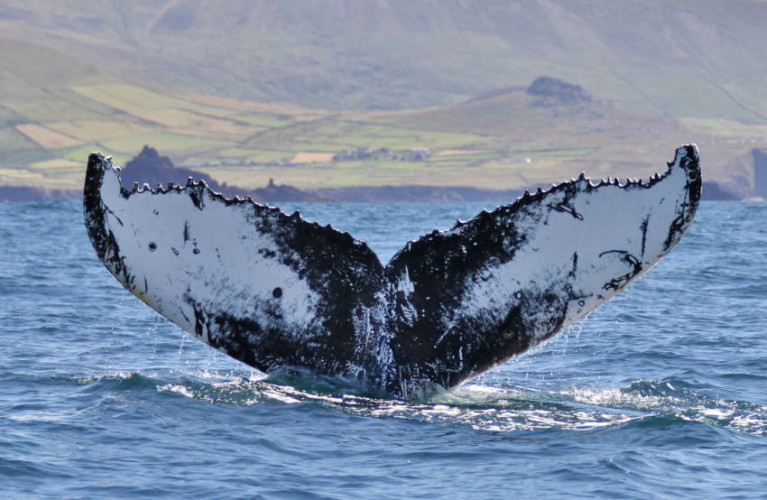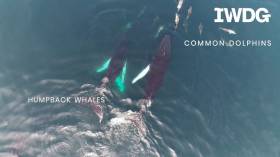Displaying items by tag: WhaleTrack Ireland
The Irish Whale and Dolphin Group (IWDG) is seeking a new sponsor for its “pioneering” WhaleTrack Ireland project.
Previously backed by Ryanair, WhaleTrack Ireland seeks to understand how the large marine wildlife — especially humpback whales — are using Irish waters, largely through citizen science.
During the last 12 months, the IWDG says it has increased its work raising awareness of humpback whales “to unprecedented levels in Ireland”.
This includes the first ever confirmation of breeding grounds in Cape Verde for whales that frequent Irish shores.
“In order to continue this important work the IWDG need a new sponsor,” the group says.
“We have significant capital equipment purchased under the Ryanair sponsorship but require funds to support fieldwork and maintain our photo ID catalogues and provide support to our citizen scientists.
“This work supports the development of marine tourism in Ireland and greatly enhances the opportunities to go and see these magnificent creatures as well as ensuring their long-term conservation.
“The IWDG estimates that this costs around €40,000 per annum to maintain our current level of activity.”
Prospective sponsors, or those who could connect the group with same, are encouraged to get in touch with the IWDG at [email protected].
Scientists & Students Voyage To 100m Contour To Study Ireland’s Top Marine Predators
The RV Celtic Voyager departed early this morning (Thursday 1 August) from the Port of Cork on a multidisciplinary marine wildlife survey investigating the biological and oceanographic features of the 100m contour line between Cork to Galway.
The survey team comprises scientists and students from the Irish Whale and Dolphin Group (IWDG), Galway-Mayo Institute of Technology’s Marine and Freshwater Research Centre and NUI Galway’s Department of Earth and Ocean Sciences.
And they are hoping to learn more about what’s an apparent biodiversity hotspot, attracting the top marine predators in Irish waters from large predatory fish to seabirds and cetaceans.
Inspiration for the survey came from the regular occurrence of humpback whales observed near the 100m depth contour line, especially off West Kerry, and the team hopes to learn if this is consistent along the whole contour.
During the survey, which can be followed at the Scientists@Sea blog, visual survey teams will record marine mammals and seabirds from the deck, and a hydrophone will be towed to record any vocalising whales and dolphins.
Physical oceanography will be recorded through CTD casts along six east-west transects during the night. If fish marks coincide with concentrations of marine predators, it’s hoped they will reveal what species are feeding and what they’re feeding on.
This survey also contributes to the IWDG’s WhaleTrack Ireland project, funded by Ryanair through its Carbon Carbon Offset Programme.
Whale watchers have captured spectacular aerial video of a group of humpback whales spotted “socialising” off West Cork.
The Irish Whale and Dolphin Group’s science officer Seán O’Callaghan filmed the remarkable scene last month just days after the first humpback whale sighing of the year was made in the same region, sailing out of Reen Pier.
“We had perfect sea conditions to search for cetaceans (whales, dolphins and porpoises) but our efforts to spot distant large whale blows were hampered by Saharan sand that caused a thick haze at sea,” the IWDG said.
“However, we did connect with up to six humpback whales feeding and socialising in offshore waters which allowed us to collect the first set of aerial images and video that will be used to estimate the length and body condition of these iconic giants.”
The video shows four of the humpback whales interacting with each other while common dolphins swim just ahead and among them.
And it marks the first significant contribution to WhaleTrack Ireland — the IWDG’s new drone-based citizen science project, supported by Ryanair, which aims to find out what these and other marine wildlife giants are doing within and beyond Irish waters.
































































